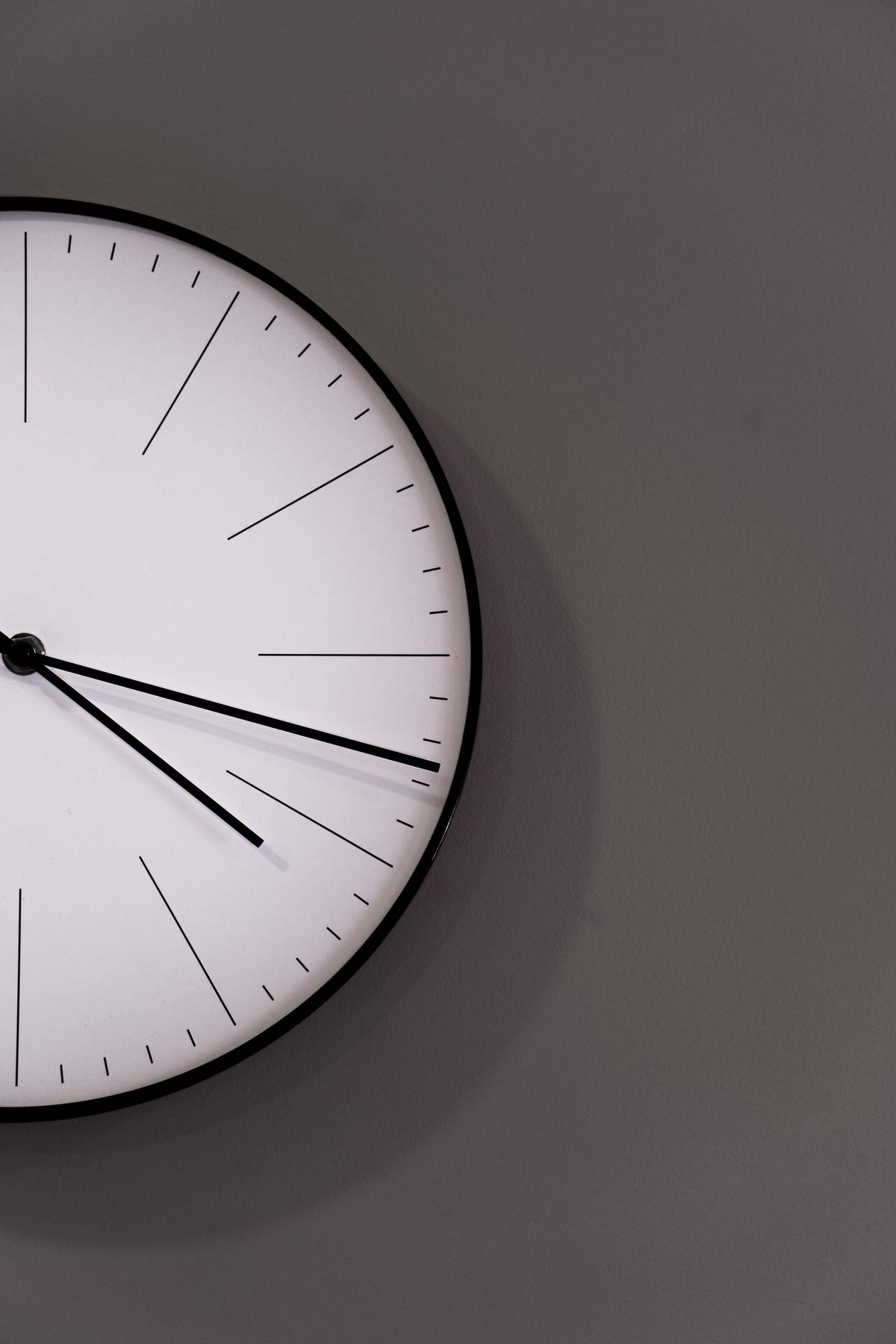In the age of digital media, where every aspect of our lives seems to be connected through screens, maintaining a balanced screen time has become an intriguing and pressing matter. The daily interaction with computers, smartphones, and tablets has led to a digital landscape laden with both opportunities and challenges. The amount of screen time each day can greatly impact our physical and mental health. The journey towards understanding these impacts, assessing personal screen time habits and learning practical ways to manage them is crucial in today’s society, where analog and digital realms intertwine endlessly. In tackling this issue, we aim to achieve a more mindful use of technology, fostering healthier habits and productivity without compromising our overall well-being.
Understanding the Effects of Excessive Screen Time
Understanding the Effects of Excessive Screen Time
Excessive screen time has been linked to numerous physical and mental health issues. One of the most immediate physical effects is eye strain, commonly referred to as “computer vision syndrome,” or CVS. This can cause dryness, blurriness, and fatigue in the eyes. It may also lead to headaches, back and neck pain, and even long-term vision issues like nearsightedness. Taking frequent breaks from the screen and practicing good posture can help alleviate these symptoms.
Screen time can also interfere with sleep. The blue light emitted by screens suppresses melatonin, the hormone that controls your sleep-wake cycle or circadian rhythm. This can make it harder to fall asleep and cause you to wake up feeling unrefreshed. Making a conscious effort to reduce screen time before bed and keeping devices out of the bedroom can help maintain a healthy sleep schedule.
Obesity is another major risk associated with excessive screen time. Sedentary behaviors, like sitting for hours in front of a screen, contribute to weight gain. This is especially concerning in children, where high screen time often replaces physical activities. Comprehensive guidelines ranging from setting screen time limits, encouraging outdoor play and movement, to being mindful about eating habits during screen time can curb obesity related risks.
Screen time can also impact mental health. Studies link excessive screen time with an increased risk of developing depression and anxiety, especially in adolescents. Multiple hours per day on screens also exposes individuals to cyberbullying, reduces face-to-face socializing, and can lead to a sense of social isolation. Cultivating a balance between digital and real-life interactions can help maintain good mental health.
The Need to Minimize Screen Time
Minimizing screen time is an important part of maintaining overall health and wellness. The impacts on both physical and mental health have been increasingly recognized, making it essential to consciously change everyday habits. This could include gradually reducing how long you spend in front of a screen, making areas in your home screen-free, and designating meal times as device-free periods. These changes can have substantial health benefits.
Additionally, it’s vital to distinguish that not all screen time is equal. Activities like watching TV, considered passive screen time, can be more detrimental than active screen time, such as video chatting with loved ones or using a fitness app. Therefore, improving the quality of your screen time is as important as reducing it.
It’s crucial to educate ourselves and others about the harmful effects of excessive screen use. Being knowledgeable about these risks can help to actively prevent them. In doing so, we can improve our relationship with technology to better enhance our overall health and well-being.

Assessing Your Screen Time
Assessing Your Screen Usage
To successfully reduce screen time, it’s critical to first understand your current digital device habits. You might be spending your screen time divided amongst various devices such as smartphones, computers, tablets, and TVs. Calculating the hours spent on each device can provide a snapshot of your total screen usage.
Different devices cater to different activities. For instance, your computer may primarily be for work, your phone for social media, and your television for relaxation and entertainment. Upon examination, you might find that certain activities consume a disproportionate amount of your screen time, potentially causing harm to your health.
Also, screen usage often fluctuates during the day. Screen time may peak in the morning with email checking, or in the evening with movie streaming. Recognizing these patterns can help indicate when you are most susceptible to prolonged periods of screen use.
Tracking Screen Time With Tools and Methods
Keeping track of your screen time can be simplified with the aid of certain tools and apps. Many smartphones have built-in options to monitor screen time. For instance, iPhones provide a ‘Screen Time’ feature that gives you a detailed report of your daily and weekly activities, the time spent on different apps, and even the number of times you pick up the device. For Android users, Google’s ‘Digital Wellbeing’ tool serves a similar purpose.
In addition to built-in features, various third-party apps also offer comprehensive tracking features. These apps often allow you to set daily limits for certain activities, like social media use or gaming, and send alerts when you exceed those limits.
Another method involves manually keeping a screen time diary. This not only helps in tracking the number of hours spent in front of screens but also involves taking note of the emotional and physical effects you experience after each session of use. For example, eye strain, headache, lost sleep, or feelings of restlessness could be indications of excessive screen time.
Benefits of a Screen Time Diary
Keeping a record of your personal screen use through a screen time diary can shed light on patterns that may not be immediately obvious. By keeping an eye on the time you spend on screens, you can pinpoint areas and times where excess use frequently occurs.
This routine can also help identify certain triggers or ingrained habits that spur excessive screen time. If you often find yourself scrolling social media after reading a stressful work email or you’ve made a habit of keeping the TV on late while you drift off to sleep, you can note down these tendencies.
Finally, cutting back on screen time due to these revelations often leads to potential health benefits. This could mean anything from diminished eye strain, better sleep quality, increased physical activity, and more downtime for real-life connections. Your screen time diary serves as a stepping stone towards a healthier relationship with digital media.

Practical Tips to Reduce Screen Time
Establishing Screen Time Boundaries
As for implementing tangible changes, setting defined limits for screen use is a strategy that gets straight to the point. Various platforms and applications can automatically switch off your devices after a certain period of use or at specific times. For instance, Apple’s Screen Time feature lets you monitor and limit daily use for particular apps or types of apps. Google’s equivalent for Android, Digital Wellbeing, also supports app limits and even introduces a grayscale screen during scheduled “wind down” periods to discourage further usage.
Creating Technology-Free Zones
Another practical strategy would be to designate certain areas of your home as “technology-free zones.” This method was implemented successfully by a family in California, who decided to create tech-free zones in all the bedrooms and dining room. The rule was adhered to everyone living in the house, and it resulted in a noticeable reduction in screen time. For example, instead of watching TV or scrolling through their phones before bedtime, they read books, resulting in improved sleep quality.
Encouraging Physical Activities
Physical activities can also divert attention away from screens and towards more engaging and health-enhancing behaviors. Instead of spending time on gadgets, hours can be spent playing a sport, working out, gardening, hiking, or even just taking a walk. Exercise has been proven to not only improve physical health but mental health as well, reducing stress and improving mood. A 2019 study published in the journal JAMA Psychiatry found that physically active individuals had lower risks of developing depression.
Taking Regular Breaks
If your job or lifestyle involves a lot of screen time, another way to reduce it is by taking regular breaks. Step away from your device every 20 to 30 minutes, even if it’s just for a minute or two. This practice can help prevent computer vision syndrome, which is a condition that causes eye strain, headaches, and blurred vision among other symptoms.
Rediscovering Traditional Forms of Entertainment
For those of us who are searching for effective ways to lessen our screen time, one of the best solutions lies in embracing more ‘old school’ forms of entertainment. Instead of choosing a series on Netflix or an online game, why not pick up a good book or listen to an intriguing audiobook? Opt for a spirited round of a board game with your loved ones in place of an evening spent in front of the TV. This not only helps reduce screen time, but also facilitates social interaction and bolsters relationships. As an example, consider the case of a New York family who substituted their customary movie night with a lively board game session. They reported a substantial decrease in screen time, coupled with an uptick in deep conversations and family bonding opportunities.

Photo by akramhuseyn on Unsplash
Maintaining Balance: Digital Health in the Modern World
Understanding the Negative Effects of Excessive Screen Time
Certainly, in today’s fast-paced digital world, eschewing screens altogether is not a feasible proposition. However, we must be aware that an over-dependence on screens -be it smartphones, tablets, or computers- can invite several health issues. Physical problems such as eye strain, recurrent headaches, and insomnia have been recorded in cases of prolonged screen usage. Furthermore, it can pave the way for severe long-term health conditions such as obesity and heart disease. Beyond the physical aspects, excess screen time also carries potential mental health implications and may exacerbate symptoms of stress, anxiety, and depression.
Maintaining Balance in a Digital World
Balance in digital technology usage is the need of the hour. When work or school relies on screen use, it’s crucial to strategize the time spent on screens effectively. It could be achieved by setting boundaries on screen-based entertainment. Allocating certain hours of the day for ‘unplugging’, partaking in activities without screens, is an effective approach.
Physical activities during work or class breaks is a good habit. Such interactions with the physical world revitalize the brain and mitigate the negative side effects of persistent screen use. Also, keeping digital devices out of the bedroom can ensure a good night’s sleep.
The Importance of Mindful Screen Use
Mindfulness towards screen time implies being aware of how much time we spend in front of screens and the quality of this spent time. Knowing what we use our devices for and giving ourselves breaks can significantly decrease potential health risks.
Applications to track time spent on certain activities and provide screen time summaries can be beneficial. This practice, sometimes called digital auditing, can help us become aware of our smartphone usage patterns and identify areas for possible reduction. Also, setting app usage limits and reminders to check posture, blink regularly, or look away from the screen at regular intervals can be useful.
Making Screen Time Healthier
While it’s essential to reduce screen time, making the time we do spend healthier is equally important. Apps with color temperature filters that reduce blue light exposure help alleviate eye strain, as blue light directly affects circadian rhythms and sleep quality. Furthermore, following the 20-20-20 rule – looking at something 20 feet away for 20 seconds every 20 minutes – can also be beneficial.
Consider using voice-assisted technology to give your eyes a rest, such as reading out text or responding to messages by voice. It’s also recommended to adjust screen brightness to a comfortable level and keep the screen at an optimal distance to reduce eye strain.
The Need for Regular Health Checkups
Regular health checkups help monitor the impact of digital device usage on health. Early detection of any symptoms or disorders helps in the timely intervention and prevention of more serious health issues arising from excessive screen use. These regular checkups contribute to maintaining balance in a digital-centric world.
In conclusion, the modern digital world demands mindful users who can judiciously balance their screen time. A combination of self-awareness, discipline, usage of available aids, and regular health checkups can contribute to a healthy digital lifestyle.

Establishing a balanced relationship with our screens is an important step in maintaining our health in the digital-centric era. While absolute elimination of screen time is not a viable option, harmonizing our lives with mindful usage certainly is. It starts from having a clear understanding of the real impacts of excessive screen use to deploying practical strategies to reduce it. Remember, every small step towards reducing screen time counts, and it is never too late to begin the journey. Along the way, it’s important to implement measures that can make screen time healthier, such as using devices that reduce blue light exposure. Crafting a tech-life balance isn’t about rejecting technology, but about teaching ourselves how to integrate it into our lives in a way that champions our health and well-being.
